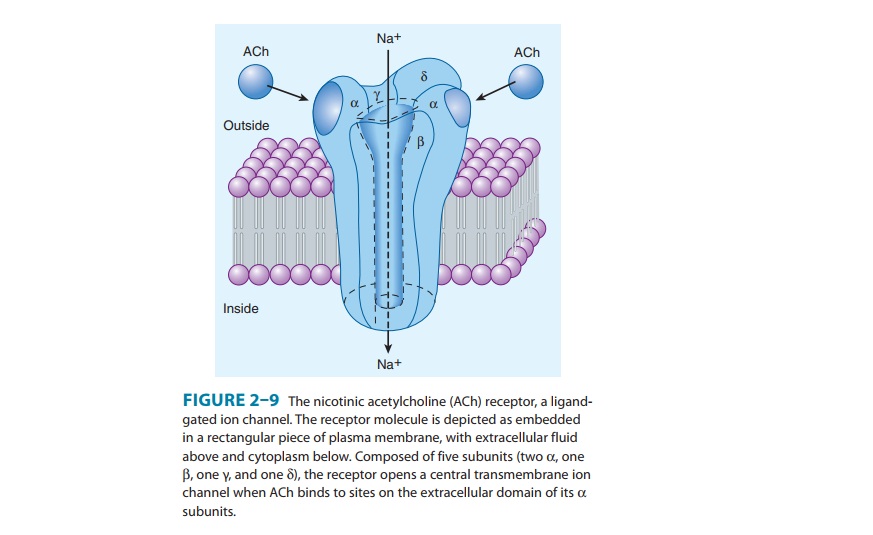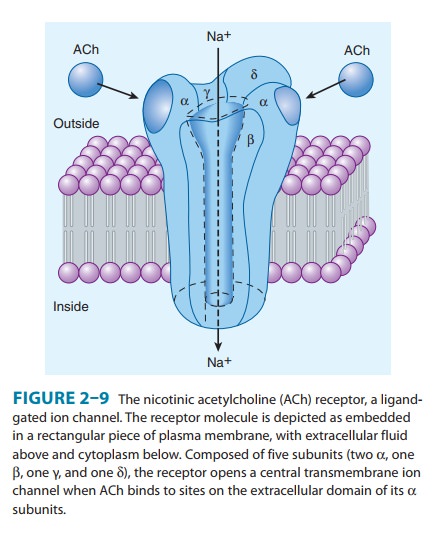Chapter: Basic & Clinical Pharmacology : Drug Receptors & Pharmacodynamics
Ligand- and Voltage-Gated Channels

Ligand- and Voltage-Gated
Channels
Many
of the most useful drugs in clinical medicine act by mimicking or blocking the
actions of endogenous ligands that regulate the flow of ions through plasma
membrane channels. The natural ligands are acetylcholine, serotonin, GABA, and
glutamate. All of these agents are synaptic transmitters.
Each
of their receptors transmits its signal across the plasma membrane by
increasing transmembrane conductance of the relevant ion and thereby altering
the electrical potential across the membrane. For example, acetylcholine causes
the opening of the ion channel in the nicotinic acetylcholine receptor (nAChR),
which allows Na+ to flow down its concentration gradient into cells, producing a
localized excitatory postsynaptic potential—a depolarization.
The
nAChR is one of the best characterized of all cell-surface receptors for
hormones or neurotransmitters (Figure 2–9). One form of this receptor is a
pentamer made up of four different polypeptide subunits (eg, two α chains plus one β, one γ, and onechain, all
with molecular weights ranging from 43,000 to 50,000). These polypeptides, each
of which crosses the lipidbilayer four times, form a cylindrical structure that
is 8 nm in diameter. When acetylcholine binds to sites on the α subunits, a
conformational change occurs that results in the transient opening of a central
aqueous channel through which sodium ions penetrate from the extracellular
fluid into the cell.

The
time elapsed between the binding of the agonist to a ligand-gated channel and
the cellular response can often be mea-sured in milliseconds. The rapidity of
this signaling mechanism is crucially important for moment-to-moment transfer
of informa-tion across synapses. Ligand-gated ion channels can be regulated by
multiple mechanisms, including phosphorylation and endocy-tosis. In the central
nervous system, these mechanisms contribute to synaptic plasticity involved in
learning and memory.
Voltage-gated
ion channels do not bind neurotransmitters directly but are controlled by
membrane potential; such channels are also important drug targets. For example,
verapamil inhibits voltage-gated calcium channels that are present in the heart
and in vascular smooth muscle, producing antiarrhythmic effects and reducing
blood pressure without mimicking or antagonizing any known endogenous
transmitter.
Related Topics